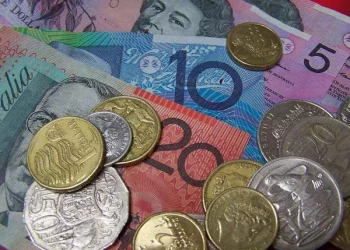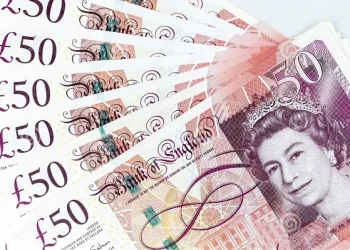Foreign exchange (Forex) trading has gained prominence globally, with individuals, businesses, and governments keen on capitalizing on the fluctuations in the value of currencies. The dynamic relationships between different currencies influence global trade, investments, and the purchasing power of individuals in different countries. One of the most intriguing questions that often arise in Forex trading and currency comparisons is: “Which currency is cheaper — the California currency or the Indian Rupee?”
To clarify, California does not have its own currency. As a state in the United States, its official currency is the U.S. Dollar (USD), which is one of the most traded and widely used currencies in the world. Therefore, comparing the “California currency” with the Indian Rupee (INR) means comparing the U.S. Dollar (USD) with the Indian Rupee (INR), which has become a common discussion point in financial markets, particularly in Forex trading.
In this article, we will explore the relative strengths of the U.S. Dollar (USD) and the Indian Rupee (INR), factors influencing their value, and the key points that determine which of these currencies is “cheaper.” We will also dive into broader economic trends, historical performance, and provide insight into how these currencies impact Forex traders and global economics.
Understanding Currency Valuation: What Makes a Currency “Cheap”?
Before delving into the specifics of comparing the U.S. Dollar with the Indian Rupee, it’s crucial to understand what makes one currency cheaper than another. The value of a currency is influenced by several factors, including:
Exchange Rates: The most common way to compare the value of California currency and the Indian Rupee is through the exchange rate. The exchange rate represents how much one currency is worth in terms of another. For instance, if the USD to INR exchange rate is 1 USD = 75 INR, it means one U.S. Dollar can be exchanged for 75 Indian Rupees. A higher exchange rate suggests that the currency being compared is relatively weaker, while a lower exchange rate indicates a stronger currency.
Purchasing Power Parity (PPP): This concept helps explain how much a given amount of currency can buy in different countries. If the price of goods and services in India is cheaper than in the U.S., then, according to PPP, the Indian Rupee may be considered undervalued compared to the U.S. Dollar.
Economic Indicators: The economic health of a country plays a significant role in determining the strength of its currency. Key factors like inflation rates, GDP growth, interest rates, and unemployment levels influence the demand for a currency. A strong economy typically correlates with a stronger currency.
Interest Rates: Higher interest rates tend to attract foreign investment, which can drive up the demand for the currency, thus increasing its value. Conversely, lower interest rates can have the opposite effect, making a currency weaker.
The U.S. Dollar: Global Reserve Currency
The U.S. Dollar (USD) is the world’s primary reserve currency. It is widely used in global trade, financial markets, and international transactions. The U.S. Dollar holds significant weight in the global economy due to several factors:
Global Dominance: The U.S. Dollar is the most traded currency in the world, accounting for over 85% of daily Forex transactions. It is the standard currency for commodities like oil, gold, and other precious metals. This widespread usage means that the U.S. Dollar enjoys high liquidity and is seen as a safe haven during times of economic instability.
Economic Strength of the U.S.: The United States boasts the largest economy in the world, with a GDP that consistently ranks as the highest globally. The economic might of the U.S., along with its strong financial institutions, ensures that the U.S. Dollar remains a stable and relatively strong currency.
Federal Reserve Policies: The Federal Reserve, the central bank of the United States, plays a crucial role in shaping the value of the U.S. Dollar. Through its monetary policy decisions, such as adjusting interest rates and engaging in quantitative easing, the Fed influences the strength of the U.S. Dollar in the Forex market.
Despite its strength, the U.S. Dollar is not immune to fluctuations. The value of the USD can be influenced by factors such as changes in interest rates, inflation, or geopolitical events. However, compared to other currencies, the U.S. Dollar has historically been strong and remains a cornerstone of global financial markets.
The Indian Rupee: Emerging Market Currency
The Indian Rupee (INR) is the official currency of India, the world’s largest democracy and one of the fastest-growing economies. While the Indian Rupee has shown growth over the years, it is still considered a weaker currency compared to the U.S. Dollar. Several factors contribute to the value of the Indian Rupee:
India’s Economic Growth: India has emerged as one of the most promising economies in the world, with consistent growth rates. The country is home to a large consumer base, a booming tech industry, and a robust service sector. As the Indian economy grows, the demand for the Indian Rupee tends to increase, potentially strengthening the currency over time.
Inflation and Fiscal Policies: Inflation has historically been a concern in India. Higher inflation rates can erode the purchasing power of the currency and lead to depreciation in the exchange rate. Furthermore, fiscal policies, including government spending and tax reforms, play a role in shaping the currency’s value.
Monetary Policy and the Reserve Bank of India (RBI): The Reserve Bank of India, India’s central bank, implements monetary policies that affect the value of the Indian Rupee. For example, changes in interest rates or interventions in the Forex market can impact the value of the currency.
Geopolitical and External Factors: The Indian Rupee is also influenced by global events. For instance, fluctuations in global oil prices (since India is a major importer of oil) can impact the exchange rate. Political stability, trade balances, and foreign investment inflows are also significant factors.
The USD/INR Exchange Rate: Historical Trends
When comparing the U.S. Dollar with the Indian Rupee, one of the most important indicators is the USD/INR exchange rate, which tells us how much one U.S. Dollar is worth in Indian Rupees. Historically, the exchange rate has shown significant volatility, influenced by both domestic and global factors.
For example, the U.S. Dollar has appreciated significantly against the Indian Rupee in the last few decades. In the early 1990s, the exchange rate was around 17 INR to 1 USD. By the 2000s, the rate had risen to around 40 INR to 1 USD. More recently, the exchange rate has hovered between 70 and 80 INR to 1 USD.
This significant depreciation of the Indian Rupee relative to the U.S. Dollar reflects a range of factors:
India’s Trade Deficit: India has consistently run a trade deficit, importing more than it exports. This leads to a greater demand for foreign currencies like the U.S. Dollar, putting downward pressure on the value of the Indian Rupee.
Inflation and Domestic Factors: Higher inflation in India compared to the U.S. has contributed to the weakening of the Indian Rupee. Additionally, fiscal policies and the balance of payments situation have also played a role.
Global Financial Events: Events like the 2008 global financial crisis and the COVID-19 pandemic have had a significant impact on the USD/INR exchange rate. The U.S. Dollar, being a safe-haven currency, often appreciates during times of global uncertainty, which contributes to the depreciation of the Indian Rupee.
Is the Indian Rupee Cheaper Than the U.S. Dollar?
Now, the central question: Is the Indian Rupee cheaper than the U.S. Dollar?
Given the exchange rates, the Indian Rupee is indeed considered cheaper compared to the U.S. Dollar. For instance, at an exchange rate of 1 USD = 75 INR, it takes more than 70 Rupees to purchase one U.S. Dollar. This is significantly higher than the exchange rate between the U.S. Dollar and other major currencies like the Euro or British Pound, where the exchange rate is closer to 1:1 or 1:0.9.
However, the term “cheaper” doesn’t necessarily mean weaker in a negative sense. The Indian Rupee’s relative cheapness against the U.S. Dollar reflects the differences in economic size and purchasing power between India and the United States. The U.S. economy is much larger, with a higher GDP per capita, which results in a stronger currency. On the other hand, India’s economy is still developing, and its currency reflects that developmental status.
The Implications for Forex Traders
For Forex traders, the comparison between the U.S. Dollar and the Indian Rupee presents numerous opportunities and challenges. The Indian Rupee’s volatility offers the potential for profitable trades, especially for those who can navigate the fluctuations in the exchange rate. Traders may seek to profit from the movement of the USD/INR pair, using strategies such as:
Trend Following: Identifying trends in the USD/INR exchange rate and capitalizing on upward or downward movements.
Carry Trades: Taking advantage of interest rate differentials between the U.S. and India to profit from the currency pair.
Hedging: Companies or investors with exposure to India may hedge their risk by using Forex instruments to protect themselves against fluctuations in the USD/INR exchange rate.
Conclusion
In conclusion, while the Indian Rupee is technically cheaper than the U.S. Dollar, the true value of a currency extends beyond just its exchange rate. The strength or weakness of a currency is determined by a multitude of factors, including economic conditions, government policies, and global market dynamics. For Forex traders, understanding these factors is essential in making informed decisions about currency pairs like USD/INR.
Ultimately, the Indian Rupee’s relative cheapness reflects the differences in the economic landscape between the U.S. and India. As India’s economy continues to grow and develop, the value of the Indian Rupee may fluctuate, but for now, the U.S. Dollar remains the stronger currency. The relationship between these two currencies will continue to be an important aspect of the global financial landscape and Forex market trading.
Related Topics:
























